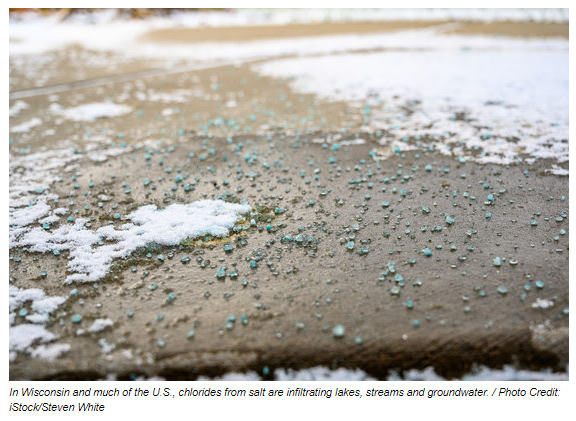
Wisconsin DNR: Reduce Salt Use This Winter
MADISON, Wis. – The Wisconsin Department of Natural Resources (DNR) and Wisconsin Salt Wise invite the public to learn more about the impacts of road salt on the state’s drinking water, pets and freshwater ecosystems during Wisconsin Salt Awareness Week, Jan. 24-28, 2022.
Wisconsin Salt Awareness Week speakers include Bailey Wilmoth (University of Toledo), Katie Cassidy (University of Minnesota – Duluth), Ken Bradbury (Wisconsin Geological and Natural History Survey), Kathy Lake (Madison Metropolitan Sewerage District), Lexi Passante (University of Wisconsin-Milwaukee), Kevin Anderson (WI Dept. of Public Instruction) and Emil Juni (WisDOT).
Click HERE to learn more about Salt Awareness Week and Wisconsin Salt Wise.
While salt keeps Wisconsin roads safe during winter, using more salt than needed comes at a price. In Wisconsin and much of the U.S., chlorides from salt are infiltrating lakes, streams and groundwater. According to Wisconsin Salt Wise, one teaspoon of salt is all it takes to make five gallons of water toxic for freshwater organisms.
Reducing salt use is key to decreasing chloride loads. Follow these steps to right-size your salt use:
Shovel: Clear walkways and other areas before the snow turns to ice. The more snow removed manually, the less salt you will need and the more effective it will be.
Scatter: When using salt, scatter it so that there is space between the grains. A 12-ounce coffee mug of salt is enough to treat an entire 20-foot driveway or 10 sidewalk squares. If you see oversalting, follow these simple steps to help educate others about salt.
Switch: Salt won’t work when pavement temperatures drop below 15 degrees. Switch to sand for traction or a different ice melter that works at lower temperatures.
For more information on the DNR’s efforts to monitor chlorides and reduce their effects, visit the DNR’s Salt and Storm Water website HERE.

